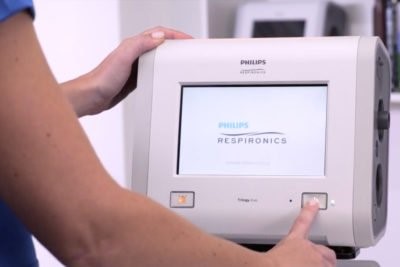By AJ Riviezzo, BA, MA
American Physician Financial Solutions
There is a lot of discussion on the lifted regulations for implementing telehealth in the medical provider’s office. These lifted regulations allow providers to see patients remotely during the current coronavirus health emergency declared in the United States.

American Physician Financial Solutions
The biggest challenge is understanding some of the new regulations and how exactly to add this service to each individual practice. Some common questions are addressed below.
TECHNOLOGY
Telehealth requires a live video and audio interaction. There are many softwares that allow this and some are even free with limited capacity. Some popular choices are DoxyMe, Zoom and Teladoc. A software you are already using such, as Kareo, EMA and Updox, may also offer this option. Check with your support team to see if they have added this feature as many others already have.
The larger payers also have been releasing platforms to use with their patients. See their websites for more information. Availity has recently released a platform for providers to use as well.
Additionally, the HIPAA restrictions have been lifted allowing platforms such as Facetime and Skype to be used; however, this is for emergency visits only within the expanded guidelines. Suffice to say, there are many solutions to the logistics of getting started.
SERVICES
The services you can perform through telehealth are office visits. This includes your regular code range of 99201-99215. There is some confusion on new vs established and the current language from CMS still states that “must have a previous relationship” (established) however the guidelines also allow for new patient codes.
While the fact sheet from CMS MedicareLink (cms.gov/newsroom/fact-sheets/medicare-telemedicine-health-care-provider-fact-sheet) states no audits will be completed at this time, this does not guarantee no audits will be performed after the crisis is over, so please read the guidelines carefully.
Coding will be based upon time. It is best to record your visit if possible, but if not a notation in the chart of how long the visit took (be exact) should be added. Even better yet is to include the start and stop times.
See the corresponding times with the appropriate E&M code level in the chart below.
Charting should include the same elements as a face-to-face encounter. The one caveat is the Physical Examination in which only a visual can be performed. Monitoring devices are coded and mandated differently and are left out of this article for simplicity. Suffice to say a fit-bit or other device cannot be used at this time for vitals.
Be sure to include the HPI, pertinent History, ROS, visual PE, thorough notes summarizing the consultation, and any additional information addressed to make a Medical Decision.
The notation should also include the statement “50 percent or more was spent on counseling” appended to the total time of the visit. It is also advised to notate the originating site of the visit. During the emergency this includes the patient’s home.
CONSENT
Charting should include the same elements as a face-to-face encounter. The one caveat is the physical examination in which only a visual can be performed. Monitoring devices are coded and mandated differently and are left out of this article for simplicity. Suffice to say a fit-bit or other device cannot be used at this time for vitals.
Be sure to include the HPI, pertinent history, ROS, visual PE, thorough notes summarizing the consultation, and any additional information addressed to make a Medical Decision. The notation should also include the statement “50 percent or more was spent on counseling” appended to the total time of the visit. It is also advised to notate the originating site of the visit. During the emergency this includes the patient’s home.
CONSENT
You must have the consent of the patient, and any Telehealth visits must be initiated by the patient. Typically, this is a written consent, and during normal times is the requirement.
However, verbal consent will be accepted during the emergency window. This should be recorded prior to the visit beginning, and if unable to record should be noted that consent was asked and given in the chart. This must be obtained prior to each visit. Of note is that each payer is handling this differently and most Medicaid plans still require written consent.
Many practices are offering this option when scheduling a regular appointment or during a call to confirm or reschedule. Advising a patient of the availability of telehealth and allowing them to decide on the appointment type meets the patient initiation rule. Remember that visits still must be medically necessary and part of the patient’s care plan.
SITE REQUIREMENTS
Until the emergency rules were in place there was a strict list of allowed originating sites. However, those limitations have been lifted. The patient’s home now qualifies along with the original list and the rural area rule has been suspended. Remember, this is temporary! Normal guidelines will reassert after the emergency is over.
The distant site is where the Provider of services is located. This can be the provider’s home and still be considered the office under the guidelines.
Depending upon payer the POS will be coded as 02 (for Medicare) or 11 with a modifier for commercial. Some commercial plans are also requesting POS 12 for the patient’s home.
Please be sure to let your biller know that the visit was performed via telehealth when all requirements are met so the correct claim information can be relayed to the payer.
CREDENTIALING
Only licensed practitioners may provide telehealth services. These include physicians, nurse practitioners and PAs. RNs and MAs do not qualify for telehealth. Claims must be billed under the performing provider’s NPI. Note that Incident-to services have not been addressed in the expansion (yet) but we will be sure to send an alert if this changes.
Care across state lines also has an expansion allowing a provider under one state’s license to treat in an adjoining state.
Payment will be the same as in office visits during the emergency only; lowered payment applies when that status expires along with all other expanded rules.
CONCLUSION-
Telehealth can be implemented immediately during the national emergency once a compliant software is chosen. The rules outlined above apply for all Medicare and Medicare Advantage patients.
Commercial payers have other rules to follow, and some plans may not cover these services. Several commercial payers have only opened telehealth for CoVid-19 care so be sure to check with each payer and plan benefits prior to scheduling!
As always, patients may pay out of pocket for non-covered visits and should be made aware of this fact. A helpful commercial payer site can be found at ahip.org/health-insurance-providers-respond-to-coronavirus-covid-19/ .
It is also advised to check the commercial websites daily (the above link features hyperlinks to these websites) to see if the guidelines have changed, the situation is dynamic and the rules updated daily. VTN
GLOSSARY
Telemedicine: Describes any remote medical services. This can include telehealth, telephone call, telemonitoring, or online digital portal communications.
Telehealth: real-time online video/audio visits. Telephone calls do not qualify.
Telemonitoring: requires an approved monitoring devise typically used for CCM services. Example- Glucose or O2 monitors.
For questions, call: 719-233-0099
AJ Riviezzo, the CEO of American Physician, comes with a broad career history in medical administration starting with the U.S. Air Force. From there he has worked on both the hospital/physician side as a group practice administrator and director of contracting services as well as on the insurance side as a director of contracting for a couple different HMO’s. He has also been involved with three different healthcare affiliated company start-ups. Riviezzo received his bachelor’s degree in business from Columbia College in 1993 and his master’s degree from Webster University in 1993.



